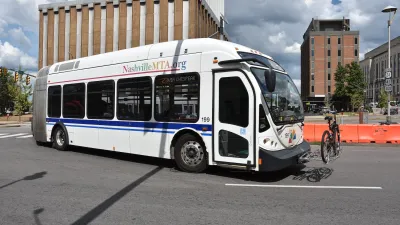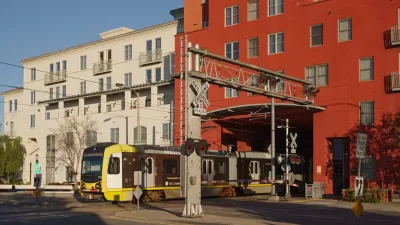Low-income families suffer most from dramatic spikes in housing and transportation costs, but governments can soften the impact through a series of actions.

Low-income households will bear the brunt of inflation and the dramatic rise in the cost of rent and gas, writes Yonah Freemark of the Urban Institute. "Most low-income workers—like most Americans—commute by car, and though electric vehicles are gaining popularity, few Americans currently have them, and those who do are relatively wealthier on average (PDF)." When it comes to housing, "families under the federal poverty level are much more likely to rent their homes than own them, exposing them to fluctuations in housing costs as landlords raise rents."
Freemark describes several suggested short-term approaches that governments at all levels can take to address the needs of low-income families and ease the burdens of high housing and transportation costs:
- "Continuing to identify mechanisms to help renters remain in place by enacting policies to reduce evictions."
- "Reducing local transit fares, increasing bus service, and creating temporary street improvements for transit and biking that give people real alternatives to driving."
- "Significantly expanding the federal government’s Housing Choice Voucher Program."
Long-term tools, writes Freemark, could include more robust rent stabilization mechanisms, zoning reform that permits higher-density housing, investment in public transit, and making land use and transportation planning decisions that reduce the need to drive and provide safe, effective multimodal options.
FULL STORY: What Rising Gas and Rent Prices Mean for Families with Low Incomes

Alabama: Trump Terminates Settlements for Black Communities Harmed By Raw Sewage
Trump deemed the landmark civil rights agreement “illegal DEI and environmental justice policy.”

Planetizen Federal Action Tracker
A weekly monitor of how Trump’s orders and actions are impacting planners and planning in America.

The 120 Year Old Tiny Home Villages That Sheltered San Francisco’s Earthquake Refugees
More than a century ago, San Francisco mobilized to house thousands of residents displaced by the 1906 earthquake. Could their strategy offer a model for the present?

In Both Crashes and Crime, Public Transportation is Far Safer than Driving
Contrary to popular assumptions, public transportation has far lower crash and crime rates than automobile travel. For safer communities, improve and encourage transit travel.

Report: Zoning Reforms Should Complement Nashville’s Ambitious Transit Plan
Without reform, restrictive zoning codes will limit the impact of the city’s planned transit expansion and could exclude some of the residents who depend on transit the most.

Judge Orders Release of Frozen IRA, IIJA Funding
The decision is a victory for environmental groups who charged that freezing funds for critical infrastructure and disaster response programs caused “real and irreparable harm” to communities.
Urban Design for Planners 1: Software Tools
This six-course series explores essential urban design concepts using open source software and equips planners with the tools they need to participate fully in the urban design process.
Planning for Universal Design
Learn the tools for implementing Universal Design in planning regulations.
Clanton & Associates, Inc.
Jessamine County Fiscal Court
Institute for Housing and Urban Development Studies (IHS)
City of Grandview
Harvard GSD Executive Education
Toledo-Lucas County Plan Commissions
Salt Lake City
NYU Wagner Graduate School of Public Service





























